- Connecting audio
- Audio PC
- Raspberry & Co
- All in Ones
- Bluetooth
- Chromecast
- Streaming audio player
- Music server
- USB Audio
- Real-time audio over IP
- FireWire DAC
- Multi-channel DAC
- NAS
- Remote control
- Vinyl rippers
- Acoustic materials
- Active crossover
- Active speakers
- Single driver speakers
- Invisible speakers
- Sound card
- Digital room correction
- Headphone
- Portable media players
Streaming audio player
Simaudio Moon MiND Network Music Streamer $1,300
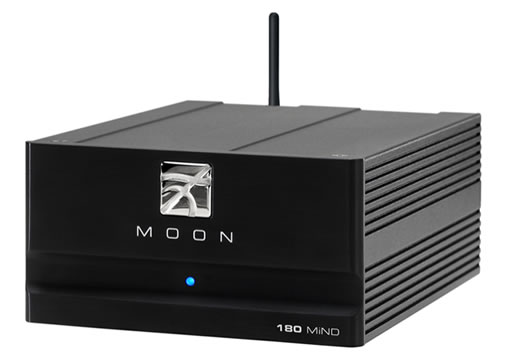
· UPnP Renderer (Universal Plug & Play)
· DLNA 1.5 Compatibility
· Online content from vTuner Internet Radio & "Music Services" upgrades
· Local Playlists, Gapless Playback & Silent track scanning
· File Support up to 24-bit/192kHz for all file formats
· Supported file formats: Wave, FLAC, FLAC HD, AIF, AAC, ALAC, MP3 (vbr/cbr), WMA-9 ,OGG Vorbis
· S/PDIF, TosLink & AES/EBU digital outputs
· 100Base-T RJ45 Ethernet interface & IEEE 802.11 b/g/n Wi-Fi interface inputs
· WEP, WPA, WPA2 Wi-Fi encryption support
Input: Ethernet, Wi-Fi
Output: AES/EBU, Coax, Toslink, SimLink In/Out
Dimensions (W x H x D): 100 x 200 x 132mm
App for iPhone, iPad, iPod touch. Adroid is in developement.
Sonore Sonic Orbiter SE US$ 298.00 (out of production)
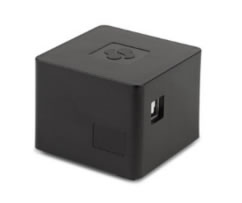
PRODUCT DESCRIPTION
The Sonore Sonic Orbiter SE is an affordable PCM, DSD/DoP and native DSD capable music renderer with Ethernet input and USB or optical output. This version includes a fast multicore ARM processor and comes with a linear power supply. The unit utilizes an external 5 VDC input so you can also use your own power supply.
SELECTABLE OUTPUT MODES
Mode #1 - SqueezeLite Output - This output works with any Logitech Media Server and compatible controllers. This output supports true gapless playback of PCM, DSD/DoP, and native DSD.
Mode #2 - ShairPort Output - This is an AirPlay emulator that utilizes streams sent to it from a compatible source. This output supports true gapless playback of PCM.
Mode #3 - MPD/DLNA Output:
Mode #3a - DLNA Output - This output utilizes streams from UPNP/DLNA servers and controllers. This output can be configured as an OpenHome renderer. This output supports true gapless playback of PCM, DSD/DoP, and native DSD.
Mode #3b - MPD Output - This output is intended to work with local storage. This output supports true gapless playback of PCM, DSD/DoP, and native DSD. This option requires a USB drive with your content in combination with the built in Drive Mounter application.
Mode #3c - Linn Song Cast Output - This output utilizes streams from a computer running Linn Song Cast.
Mode #4 - HQ Player NAA Output - This output utilizes streams from Signalyst's HQ Player running on your computer. Digital signal processing is performed by HQ Player and then asynchronously streamed to the Network Audio Adapter (NAA) output. This output supports true gapless playback of PCM, DSD/DoP, and native DSD.
Mode #5 - Roon Speaker - This unit is Roon Speaker ready and pending software update to include the feature when Roon releases the application. FYI The Roon Speaker application has been tested in beta form and it's working great...

Supports the following PCM sample rates: 44.1KHz, 48KHz, 88.2KHz, 96KHz, 176.4KHz, 192KHz, 352.8KHz and 384KHz.
Supports the following DSD sample rates: DSD64, DSD128 and DSD256.
Dimension: 2in (width) x 2in (height) x 2in (depth)
Weight: not much
Sonore Rendu US$ 1369
Ethernet to S/PDIF converter.
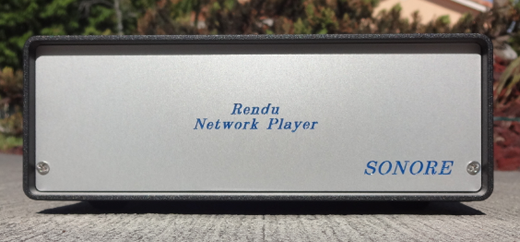
This is a DLNA/UPnP 2.0 compliant renderer.
It doesn’t have an interface but as it is a DMR (Digital Media Renderer) in DLNA speak, you can control the volume using a DMC (Digital Media Controller).
A DMC can be a PC running a DLNA server/controller software or a smartphone with DLNA software.
The schema explains it nicely.
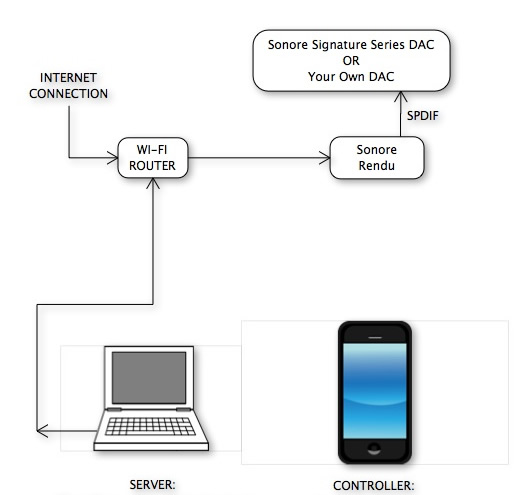
The Sonore Rendu.i2s has Ethernet input and SPDIF/I2S over HDMI out.
A model including a ESS Sabre ES9023 DAC is planned.
At the present only 120 VAC models are available!
Features
- supports gapless playback*
- supports DSD/DoP pass thru**
- powered by an on board, extremely low noise, low output impedance linear power supply
- isolated from noise on the network
- operates fully asynchronously, using on board fixed frequency low jitter clocks
- features a transformer coupled true 75 ohm SPDIF BNC output
- has an integrated, 32 bit, high precision volume control
- supports up to 24 bit playback at the following sample rates: 44.1KHz, 48KHz, 88.2KHz, 96KHz, 176.4KHz, 192KHz
- plays AAC, AIFF, ALAC, FLAC, MP3, and WAV files from HTTP streams
- controlled via apps on your mobile device
- UPnPTM AV 2.0 / DLNA compliant
* Gapless is currently supported via Android with Bubble UPNP as controller, J-River on PC as controller with local storage. Check back for updates.
** DSD/DoP pass thru requires the use of MinimServer
Sonos
Sonos has a very good reputation as a user friendly solution.
It's best to think of Sonos as a software product and the hardware is just the enabler to make the software work. Much like Apple they chose to keep the hardware ecosystem completely closed and that has allowed them to control features and functionality very well.
The good:
1) It's truly plug-and-play with most systems up and running in multiple rooms in a matter of minutes.
2) The interface is completely intuitive and non-intimidating to average people (non-geeks).
3) The system always works...if setup properly. This is where working with Sonos directly or through a dealer has benefits as the shirts at Best Buy don't have a clue.
4) Install the software on your computer and it finds your music and serves it up. No configuration needed in most cases. It just works.
5) Excellent selection of third-party services. I've discovered some great music with Pandora and made purchase decisions with MOG.
6) The CONNECT (used to be the ZonePlayer 80 and 90) has a digital out with relatively decent performance. I have one that was modified by Cullen and it's even better. Digital output is bit perfect and the clock mods reduce the jitter significantly.
7) The new offerings (Playbar, S1, SUB) all work very well and are well worth the price. We installed a playbar in our bedroom and were able to kill two birds with one stone...better sound on the TV, and got rid of the speakers we were using for music. Sound quality is surprisingly good considering the reality of where it's placed.
8) Feature releases are frequent and usually very well tested before release.
The bad:
1) Bitrate for file playback is limited to 16/44 and this likely won't change anytime soon. Sonos has offered up several reasons, but the most compelling is the fact that due to the way that the system works it's actually very difficult to keep the zones in sync. Bumping up the bitrate (over 8x for 192/24) would make that even more difficult.
2) The system currently has a limitation to the number of files that it can catalog (about 65,000), but the practical limit is lower. A friend with about 22,000 files does have trouble browsing his library on occasion as the system slows to a crawl. I've got about 15,000 loaded and haven't had any trouble so YMMV. I can say that my network is quite a bit more robust than his.
3) Sound quality from their speakers is average at best for anything more than brackground music.
4) They discontinued their dedicated controllers favoring smartphone / tablet apps instead. This is fine as the apps work well, but there's always a delay in waking up the phone, finding the app, it connecting to the system, etc. Not a big deal, but can be frustrating when you need to mute playback or skip a horrible track. The dedicated controllers were always on and ready to go.
Sonos Port $399
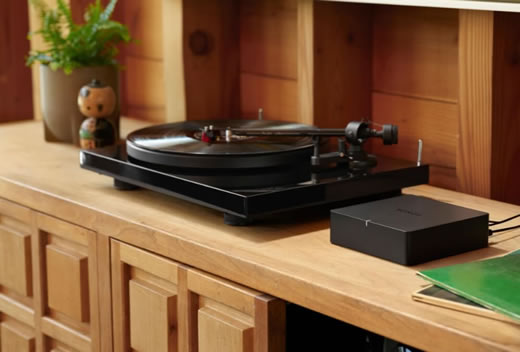
WiFi and Ethernet for control and communication with other Sonos devices.
Analog input to connect any analog device.
Aalog output to connect to an amp.
This is the 2008 Zoneplayer 90.
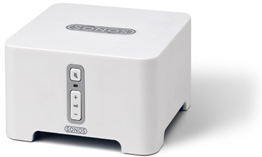
Network: ethernet/Wlan. First unit must be connected to router using a cable or you use a ZoneBridge for an all wireless setup.
Number of tracks limited to 65.000
Protocol: CIFS / SMB (file sharing) to access NAS/PC/Mac
Output: Analog (RCA) and digital out (Toslink/coax)
Audio format: MP3, WMA (WMA Lossless and WMA Pro are not supported), AAC (MPEG4), Ogg Vorbis, Audible (Format 4), Apple Lossless, FLAC, WAV, AIFF
Resolution: 16 bit / 48 kHz
Internet radio: RadioTimes, MP3 and WMA streaming audio formats
SOtM sMS-200 US$450
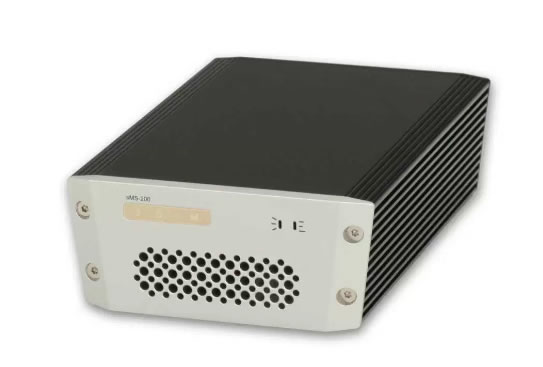
OS
Linux
Audio player
Roon Ready
DLNA renderer
Music Player Daemon(MPD)
Logitech Media Server(LMS)
Squeezelite
Audio feature
PCM 32bit/384KHz max, DSDx64, DSDx128, DSDx256
Ultra Low Jitter Clock
Ultra Low Noise Regulator
Active Noise canceller
USB port
High-End audio grade USB port x 1
USB 2.0 port x 2
Ethernet port
RJ45 100Mbps
Squeezebox Classic
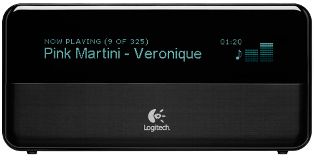
One of the first streaming audio players by Slimdevices.
Logitech stopped producing them but it is a classic indeed.
Squeezeboxes use their own proprietary protocol.
You need an computer in your home network running SlimServer/SqueezeCenter/Squeezebox Server /Squeezebox Server or what ever new name Logitech marketing department conjectured up to access your own music collection.
Often a NAS is used like the Vortex box
Squeezebox Touch USD 299.99
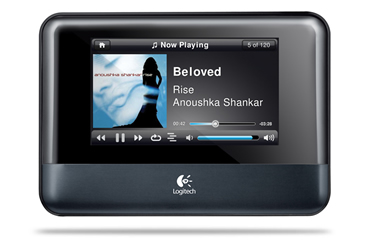
- Audio formats:
-MP3, FLAC, WAV, AIFF, WMA, Ogg Vorbis, AAC, Apple Lossless
-WMA Lossless, APE, MPC and WavPack supported through transcoding
-Some formats may require additional software installation - Internet radio
-Support for MP3, Ogg Vorbis, and WMA formatted Internet Radio streams - Wireless interface
-True 802.11g wireless networking
-Support for 802.11b and 802.11g routers and access points
-One-touch setup (with compatible WPS-supporting routers)
-Supports WPA Personal, WPA-2AES, and 64/128-bit WEP encryption - Ethernet interface
-Connects to any 100 Mbps or 10 Mbps network (with Auto MDX) - General:
-USB host connector for accessing music and photos via USB drive or USB key
-SD card slot for music and photos
-Supports sampling rates up to 24 bit / 96 kHz
-Stereo analog (RCA), headphone jack, digital optical, and digital coax output
-4.3-inch 24-bit color LCD with capacitive touch screen
-Ambient light sensor to adjust display brightness according to environment
-Infrared proximity sensor to detect presence
Tweaks
Connecting a USB DAC by John Swenson
Measurement of the SPDIF out - Anedio
Enhanced Digital Output app - USB Dac and 192k Digital Ouput - Triode
Squeezebox Transporter €1999,-

High end version of the SqueezeBox.
Protocol: proprietary streaming protocol, requires SqueezeCenter software to play your own music.
Logitech stopped production of the entire Squeeze line in august 2012.
This is the way the world ends, not with a bang but a whimper - Ben Klaas
StackAudio Link £695
Streamer without DAC

Ethenet/WiFi/USB/Bluetooth
Protocols:
- Shairport-sync (apple compatibility)
- Roon ready (In progress)
- UPnP AV protocol with audio streaming extension (OpenHome)
Output: USB audio

